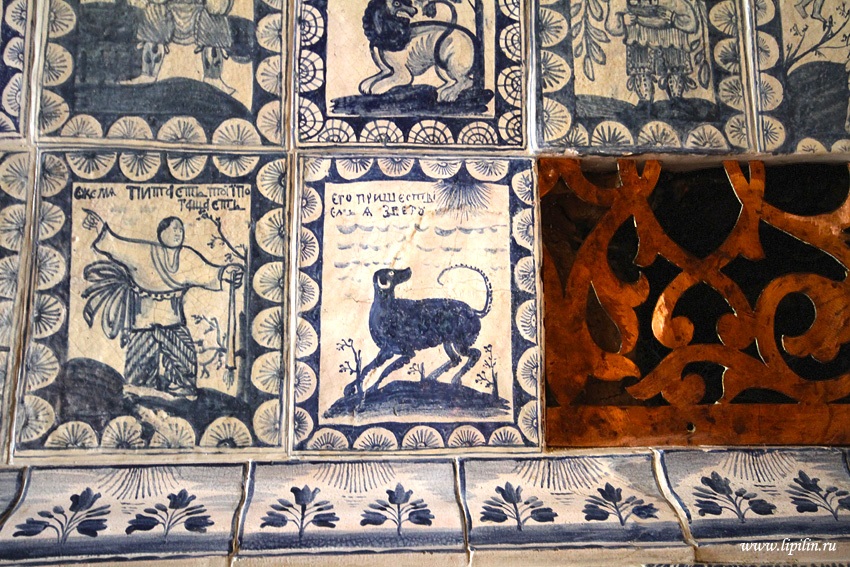Nombre:
Palacio Volkov-Yusúpov
Otro:
Localización:
Ver mapa más grande
Tipo: Edificios Civiles
Categoría:
Foto:

Voto:
Continente: Europa
País: Rusia
Localización: Moscú
Año: s. XVII
Estado: Terminado
Descripción:The Volkov-Yusupov Palace (or Chambers) are a rarity for the fact that they have weathered the test of time. Resembling a fairy-tale castle, the stone house at 21 Bolshoi Kharitonyevsky Pereulok dates back to the 16th century, with reconstruction and redesign continuing up until the 19th century.
The powerful and influential have resided in its rooms and wandered in its gardens, including Ivan the Terrible and a very young Alexander Pushkin.




















The last owner was Prince Felix Yusupov, who went down in history as the murderer of Rasputin. In one of the few historical references of the building's beginnings, he wrote in his memoirs that Ivan the Terrible used to relax here after his hunting trips, feasting luxuriously before slipping back to the Kremlin by underground tunnel.
According to Prince Yusupov, his parents discovered the tunnel during renovations of the house. During those renovations, a long corridor full of skeletons chained to the walls, compliments of the tsar, was also discovered. The Yusupov family never fancied the place and when visiting Moscow from St. Petersburg, they preferred to stay in the house's numerous wings or outbuildings, saving the chambers exclusively for gala receptions.
In general, the architects of the country's palaty, or chambers, remain anonymous, and the buildings are named after their wealthy owners. History supposes that the Volkov-Yusupov chambers were built by Barma and Postnik, the famous duo who also created St. Basil's Cathedral. (The legend turns ugly however; the architects had their eyes gouged out, their arms cut off, and their tongues torn out on orders from Ivan the Terrible, who was so stunned by the church's beauty that he did not want them to ever again create something so wonderful.)
Decorated in the Moscow baroque style, the house comprises two buildings, which were united only at the end of the 18th century. The ground floor of the right chamber is thought to be the oldest part, containing a living room, dining room, bedroom and chapel. A ballroom of about 170 square meters was intended for feasts and receptions and a stone staircase, which survives today, led from it.
All the interiors of the palace between 1892-95 were decorated with drawings by F. Solntsev who created rich murals in the Russian style, carved portals, bronze grilles, candle holders and lanterns. Still visible above the front door are traces of where icons of St. Boris and St. Gleb hung.
This stone manor house was built in the traditions of Russian palatial architecture where several separate stone terems are interconnected by vestibules. The hipped roofs of various shapes and the white-stone window frames which stand out against the bright-red background of the walls lend the manor a highly picturesque appearance. The external stone staircase leads to the second, main floor above which a row of small rooms forms a third storey.




















The upstairs floor plan mirrors the lower one, while the basement floors were once huge cellars replete with barrels of imported wines, Russian honey and berry kvass.
At one time surrounded by a huge park with a pond, the building has massive walls, up to two meters thick, and small windows. Durability and safety were the words of the day during construction.
Major renovations continued until the 1840s. At the turn of the century, a third floor was added and the facade's already intricate decorations were enriched with weathercocks on the roof and a porch on the western side. The stone fence, built in 1913, has a gate with the Yusupov coat of arms.
Ownership of the chambers switched hands several times over the course of the 17th and 18th centuries with the building serving as a symbol of the power struggle for the throne. At one time it was owned by an associate of Peter the Great, a deputy chancellor who was later charged with embezzlement of state property. In 1723 the house was confiscated and given to Count Peter Tolstoy, manager of the Secret Chancellory and head of the committee investigating the death of Peter the Great's son, Prince Alexei.
At odds with the tsar's favorite, Alexander Menshikov, Tolstoy was exiled to the Solovki Islands and the house went to Menshikov's faithful secretary, Alexei Volkov. But Volkov was the owner for less than six months, as his boss suffered a blow in the power struggle and lost all his property. In his place came Grigory Dmitriyevich Yusupov, who, incidentally, had pleaded Menshikov's case. For two centuries beginning in November 1727, the place belonged to the influential Yusupov family.
Prince Nikolai Yusupov, manager of the royal theaters, would rent out his Moscow house to tenants, including one wing to amateur actor Sergei Pushkin from 1801 to 1803. The future poet Alexander roamed its gardens full of small alleys, grottos and statues. The lasting impression on the little boy is evidenced in his poem "Eugene Onegin." It was at the old relative's house where the Larins stayed when they came to Moscow to search for a good match for Tatyana.
The family lost the house after 1917, but it is interesting to note that Prince Felix Yusupov hid part of his family fortune in the palace before he went into exile. After the Revolution, the Bolsheviks found nearly 1,000 gold and silver objects.










After the palace was taken over by the new regime, it became a Military-Historical Museum. For a short time it housed the Chekhov Museum and, from 1928, various agricultural organizations have taken up residence. Famous geneticist Nikolai Vavilov worked here, only to later be tortured to death in Stalin's labor camps.
Restoration on the Volkov-Yusupov Palace began in 2004 and was completed in 2008. It is now possible to visit this beautiful palace, yet another of the many splendid residences that belonged to the Yusupov family that doted Russia.
http://www.angelfire.com/pa/ImperialRussian/royalty/palaces/volkov.html
https://www.flickr.com/photos/totsamiykotoriy/tags/yusupovpalace/
http://moskvalubvimoey.blogspot.com.es/2013/06/blog-post_7.html
http://lipilin2010.livejournal.com/68247.html?thread=194711
http://www.liveinternet.ru/users/4211284/post263106507/
https://www.flickr.com/photos/totsamiykotoriy/tags/yusupovpalace/
http://chagnavstretchy.mirtesen.ru/blog/43074484411/PETROVSKIY-I-YUSUPOVSKIY-DVORTSYI-V-NOYABRE.
http://www.otzyv.ru/read.php?id=134190
http://moya-moskva.livejournal.com/652707.html
http://www.liveinternet.ru/tags/



Vídeo:
Contador: 14678
Inserción: 2014-06-11 16:40:05
Lugares a visitar en un radio de 100 km (en línea recta)
Mapa de los lugares a 100 km (en línea recta)
Mostrando Registros desde el 1 hasta el 0 de un total de 0
Visitas |
Más visitados Basílica de San Marcos 154861 Catedral de Notre Dame (París) 144165 Torre de Pisa 131518 Monte Saint-Michel 100635 Presa de las Tres Gargantas 81447 |
Incorporaciones |
Comentarios hazola Cúpula de la Roca gracias me... gera Buenos Aires las mejores fotos de la mejor ciudad del... Daniel M. - BRASIL San Francisco ... PEQUE Presa Chicoasén SERA QUE ALGUIEN ME PUEDE DAR MAS INFORMACIÓN DE ESTE PROYECTO ESTUDIO EN LA UNACH Y ES PARA UN... Mery Huaca Pucllana Muy interesante, muy buena la información y... |
 Tweet
Tweet


